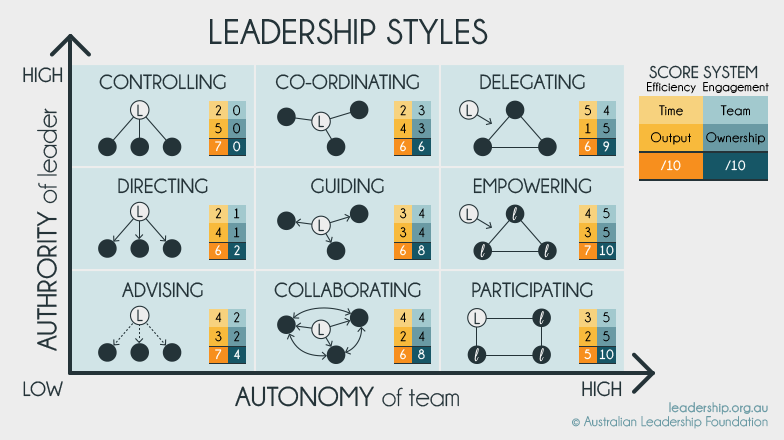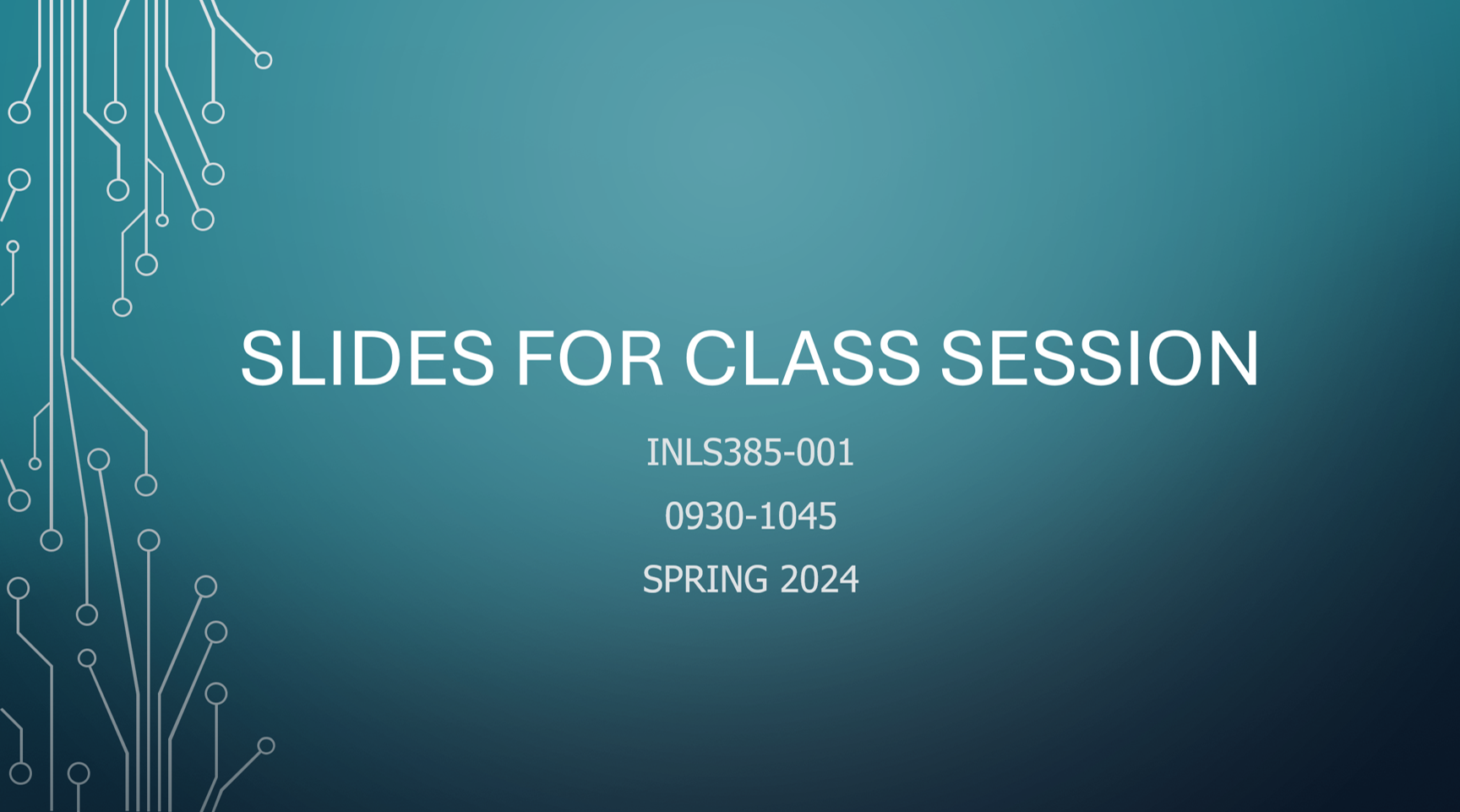Session 18
ORGANIZATIONAL LEADERSHIP MODELS
There are a number of different theories of leadership. We will consider a few and identify how we fit into their definitions.
Start by watching a discussion on leadership being a choice
"Leadership is not a talent or a gift. It's a choice. It's not complex, but it's very hard." General Stanley McChrystal explains to a packed auditorium of 600 at Stanford Graduate School of Business. McChrystal shares his perspective on leadership and influence discussing the importance of understanding culture, leading by example, building trust, and creating a common goal within a team.top
Then read this one

To prepare yourselves for the session take the What's Your Leadership Style? quiz and come prepared to discuss your results
topYou don't have to read these unless you wish to, but we might touch upon them in conversation

Most developmental psychologists agree that what differentiates one leader from another is not so much philosophy of leadership, personality, or style of management. Rather, it's internal "action logic"--how a leader interprets the surroundings and reacts when his or her power or safety is challenged ...
a typology of leadership based on the way managers personally make sense of the world around them. Rooke and Torbert classify leaders into seven distinct action/logic categories ... the first three associated with below-average performance, the latter four with medium to high performance ...
executives who are willing to work at developing themselves and becoming more self-aware can almost certainly move toward one of the more effective action logics ...
- Rooke, D., & Torbert, W. R. (2005, Apr). 7 transformations of leadership. Harvard Business Review, 66-76.
But also consider this reality in the context of the transformations noted above.
Studies find that plenty of confident egomaniacs, unsuited to the subtleties of management, get a leg-up for being, well, confident egomaniacs ...
conscientious but unprepossessing characters tend to have little-noticed but precious advantages. They can be depended on to make decisions calmly, manage teams deftly and be emotionally mature. They deserve promotion ahead of co-workers with “flash and vision, and bold displays of confidence” ...
- Business | Bartleby: Unshowy competence brings drawbacks as well as benefits, The Economist, 23 February 2023.
THINGS WE'LL TALK ABOUT
We'll consider leadership functions within organizational structures by contrasting the difference between the three Lewin styles and the multiple Rooke and Torbert styles.
- what are the strengths and weaknesses of the different leadership styles?
- plan to discuss the impact of leadership on the success and/or failure of organizations
- can an organization be successful without inspirational leadership? if so, how? if not, why?
 top
top
SOMETHING TO TAKE AWAY
Susana Baca: Tiny Desk (Home) Concert
At the Babel library and bookstore in Lima, Peru, Susana Baca is surrounded by books, wine and percussion. In addition to their instruments, her band members play the desk they sit around itself, an organic setting that blurs the boundaries between music and context. “Estamos aqui, todos unidos por la música en este bello pupitre,” she laughs: “We're here, all united by music at this beautiful desk.” The percussive fugue of “Molino Molero” ends sharply before, by contrast, the unwound and languorous “Dämmerung” stretches beneath her clarion voice.
In addition to being a musician, Baca has worked as an ethnomusicologist, a schoolteacher and Peru's former Minister of Culture; she's a curator of folklore and culture of the highest order. Throughout her El Tiny performance, the camera shifts to an overhead shot of the desk, featuring her 2021 album Palabras Urgentes beside several books and a note that says “Eres lo que lees” (You are what you read). Her performance, like all of her music, is intimate because it's situated, musically and thematically, in a specific time and place.
Across her many careers, Baca's work is always in service of preserving and honoring African and Indigenous art forms. Her rendition of “Sorongo,” written by Puerto Rican composer Tite Curet Alonso, is an electric and pulsing homage, transmuting the salsa of the original to a meditation driven by the drums, cajón and cheko, grounding the narrative of African enslavement across Latin America in Afro-Peruvian percussion. The same goes for her closer, a salsafied version of Chabuca Granda's “Canterurías,” which she introduces as “Afro-Peruvian bonus track en Babel!”
Last Updated on
|
Copyright © R.E. Bergquist 2014- |
Powered by w3.css
